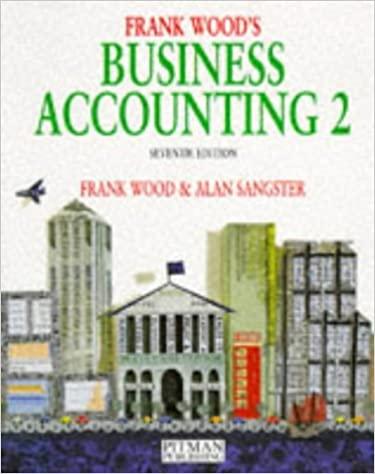Question
In the context of corporate accounting and financial reporting, the treatment of assets and goodwill involves intricate transactions that significantly impact a company's financial statements.
"In the context of corporate accounting and financial reporting, the treatment of assets and goodwill involves intricate transactions that significantly impact a company's financial statements. Assume you are a financial analyst at a publicly traded corporation, and you have been tasked with providing a comprehensive analysis of accounting transactions involving assets and goodwill:
Asset Recognition and Valuation: Explain the fundamental principles and guidelines for recognizing and valuing assets on a corporation's balance sheet. Provide examples of different types of assets, such as tangible assets (e.g., property, plant, and equipment), intangible assets (e.g., patents and trademarks), and financial assets (e.g., investments in securities). Discuss the importance of accurate asset valuation in presenting a true and fair view of a company's financial position.
Goodwill Recognition: Describe the concept of goodwill in accounting, including how it is initially recognized on the balance sheet. Explain the circumstances under which goodwill arises, such as through business combinations or acquisitions. Discuss the factors that contribute to the calculation of goodwill, including the purchase price of acquired entities and the fair value of their identifiable net assets.
Impairment of Goodwill: Discuss the accounting treatment of goodwill impairment. Explain how and when a corporation should test for impairment, including the triggering events that may necessitate such testing. Describe the impairment testing process and the calculation of the impairment loss, highlighting the impact on a company's financial statements.
Amortization of Intangible Assets: Contrast the treatment of goodwill with other intangible assets that have finite useful lives. Explain how intangible assets with finite lives are amortized over their useful periods, including the calculation of amortization expenses and their impact on the income statement and balance sheet.
Asset Disposal: Explore the accounting procedures for disposing of assets, including the sale, retirement, or exchange of assets. Discuss how the proceeds from asset disposals are recorded, and explain the implications for gains or losses on the income statement and the removal of the disposed asset from the balance sheet.
Depreciation of Tangible Assets: Detail the depreciation process for tangible assets, such as buildings and machinery. Explain the methods used to calculate depreciation (e.g., straight-line, declining balance) and how depreciation expenses affect a company's financial statements.
Fair Value Measurement: Discuss the concept of fair value measurement, particularly concerning financial assets and liabilities. Explain how fair value is determined, the significance of using market-based information, and the impact on the reporting of financial instruments.
International Accounting Standards: Compare the treatment of assets, goodwill, and other related transactions under Generally Accepted Accounting Principles (GAAP) in the United States and International Financial Reporting Standards (IFRS) used in many other countries. Highlight key differences and convergence efforts in these accounting standards.
Financial Statement Presentation: Analyze the presentation of assets, including goodwill, on a corporation's financial statements, including the balance sheet and related disclosures. Discuss the importance of transparency and compliance with accounting standards in financial reporting.
In your response, draw from relevant accounting principles, standards, and real-world examples to provide a comprehensive understanding of these accounting transactions related to assets and goodwill and their impact on a company's financial statements and performance evaluation."
Step by Step Solution
There are 3 Steps involved in it
Step: 1

Get Instant Access to Expert-Tailored Solutions
See step-by-step solutions with expert insights and AI powered tools for academic success
Step: 2

Step: 3

Ace Your Homework with AI
Get the answers you need in no time with our AI-driven, step-by-step assistance
Get Started


